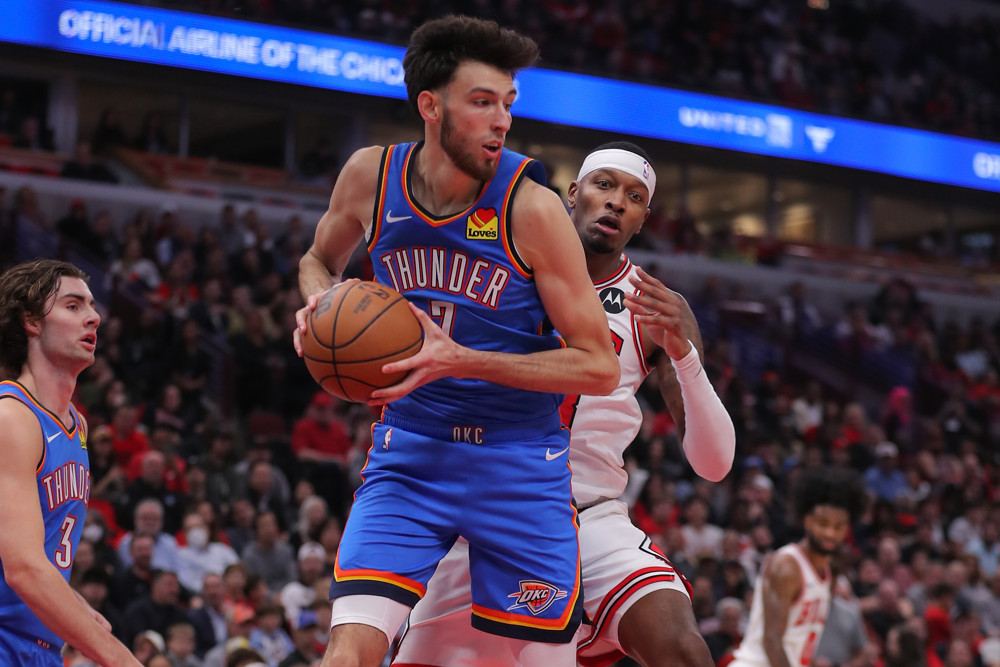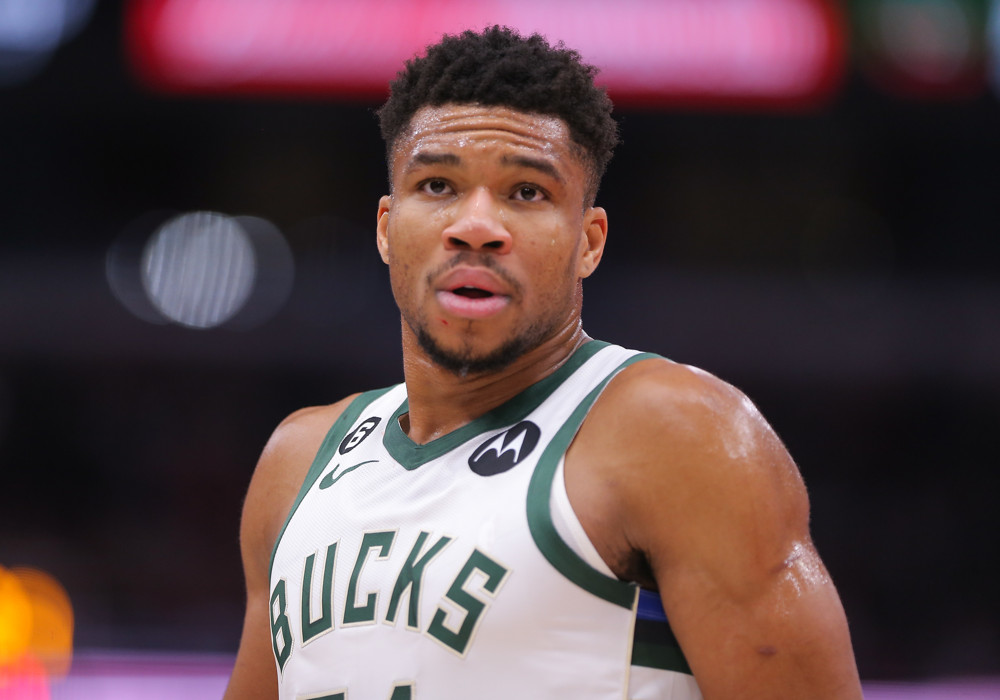The Dallas Mavericks are coming into their first Finals appearance of the Luka Doncic era as underdogs against a Celtics team that spent the entire season as the unquestioned best in class.
Boston finished the regular season with a 7-game cushion over the second-place Nuggets, a lead that was never remotely in doubt at any point of the year, thanks to an incredibly well-balanced roster that features one of the most pure distillations of 5-out offense in league history while not making any sacrifices to their defense.
It’s rare for a team to feature so many shooters while also lacking any real holes defensively, and it leaves the Mavs with a tall task if they want to take home their first championship since 2011.
Luckily for Dallas, their previous two series have given them some practice at defending well-spaced, potent offenses with dynamic isolation threats.
The Thunder are probably the closest facsimile to the Celtics given Chet Holmgren’s abilities as a spacer from above the break, but the Timberwolves also offered some interesting 5-out looks when Rudy Gobert sat and Karl-Anthony Towns shared the floor with Naz Reid.
So what can we take away from how Dallas defended those two offenses and apply to their upcoming series?
Lessons from the Thunder series
Throughout the previous two rounds, Jason Kidd’s team made calculated decisions in identifying points of concession, players they could help off of and trust their long-limbed perimeter defenders to recover to in time to prevent any real damage.
Against the Thunder, Dallas would often leave Lu Dort parked in the weakside corner and have his defender function as the low man, flashing to the strong side to deter drives or slipped screens before recovering to his assignment.
The Mavericks were even comfortable letting an elite shooter like Isaiah Joe get loose as his defender stunted at a driver, counting on their combination of rim deterrence and perimeter length to not allow a single drive to put them into a fatal rotation.
One decision that really slowed the Thunder’s potent offense was Dallas’ willingness to switch everything on the perimeter and weather mismatches in the post, knowing that the young, slightly undersized frontcourt of Chet Holmgren and Jalen Williams would struggle punishing smaller defenders.
By switching across the court and not sending doubles on perceived height mismatches, the Mavs forced hesitation by Thunder drivers. These momentary hesitations clogged lanes and helped keep Dallas from being put in full-on scramble situations, instead operating in semi-scrambles that were tricky but manageable.
Because of Dallas’ length and emphasis on keeping a help defender at the nail, the Thunder struggled to consistently drive deep into the paint, instead relying on a series of drive-and-kicks that failed to get much deeper than the free throw line.
Key in the above clip is PJ Washington’s ability to stay in front of Shai Gilgeous-Alexander in isolation – no easy feat for a good guard defender, let alone a big man – but we’ll come back to that later.
Lesson from the Timberwolves
In the Western Conference Finals, the Mavericks faced a much different style and size of offense, but there were still relevant data points we can take away.
The Wolves played 62 minutes with Naz Reid and Karl-Anthony Towns on the court and Gobert off, a sample that isn’t massive but neither is it insignificant. In that time, with the self-proclaimed best big man shooter of all time and the newly-crowned, sweet-shooting 6’9 Sixth Man of the Year, the Mavericks managed to outscore the Timberwolves by 18 points.
Once again, Jason Kidd’s preference to switch everything on the perimeter and not overreact to mismatches in the post paid off. In ball screens, they became adept at having their guard defender peel-switch onto the popping big while trusting their big to stay in front of the ball handler for long enough to let the defense recover and the low man to come over and provide back-line help.
Whether it was Doncic stuck guarding Towns on the block or Washington or Kyrie Irving guarding Anthony Edwards in space, the Mavs stunted and stayed home, preferring to let the driver blow by the defender and be met by one of their two rim protectors rather than compromise the shell of their defense by getting into scramble situations.
One key in this series was the return of Maxi Kleber from a shoulder injury. Kleber’s ability to stay in front of even dynamic ball-handlers like Anthony Edwards added another layer of versatility to the already-impressive PJ Washington/Derrick Jones Jr. combination.
Facing the Celtics
While the Thunder and the Wolves both offered different looks that might mimic the Celtics’ attack, the Mavericks are about to find out that it’s different when you go up against the real thing.
The Thunder had multiple players the Mavericks could cheat off of in Dort and Josh Giddey, and the Wolves tended to run Kyle Anderson in the dunker spot when Gobert wasn’t on the floor, another slow-release player they could feel comfortable leaving and recovering to without sacrificing devastating looks.
The Celtics, on the other hand, go seven or eight men deep, and every one of them is a dynamic shooting threat who can get their shot off quickly. There will be nowhere safe to hide, only a choice to make as to who Kidd is most comfortable daring to shoot.
Another interesting choice to monitor will be whether Washington opens the series primarily guarding Tatum or Porzingis.
Tatum is Washington’s positional equivalent, and as mentioned earlier, PJ’s ability to move his feet in space at his size makes him a good foil for Tatum’s isolation game, but keeping one of Daniel Gafford or Derek Lively II on Porzingis, one of the league’s best deep three-makers, would make it much more difficult for the Mavs to execute their funnel-and-recover scheme.
Boston, with veteran players comfortable playing in the post such as Kristaps Porzingis, Jayson Tatum, Jaylen Brown, and even Jrue Holiday, will punish smaller players more than either the Thunder or Wolves could, though Doncic and Kyrie are both surprisingly stout post defenders when locked in, as they have been during this playoff run.
The switchability of Jones, Kleber, and Washington on the perimeter will be key to containing actions run between Tatum or Brown and Porzingis, as will replicating the at-the-nail help that helped stymie so many Thunder drives, especially in Game 6.
If the Mavericks can keep the Celtics from getting too deep on drives, it will go a long way to preventing the kind of chaos the Celtics thrive on, where a single extra pass can lead to an open shot from a 40% three-point shooter.
The 2024 NBA Finals will be an interesting match as the Mavs have been forged in the fire of multiple close, hard-fought series, while the Celtics have skated through the East relatively unchecked. Kidd’s defensive schemes have proved sound until now, but it will be fascinating to see how they hold up against the best-spaced team in the league.



